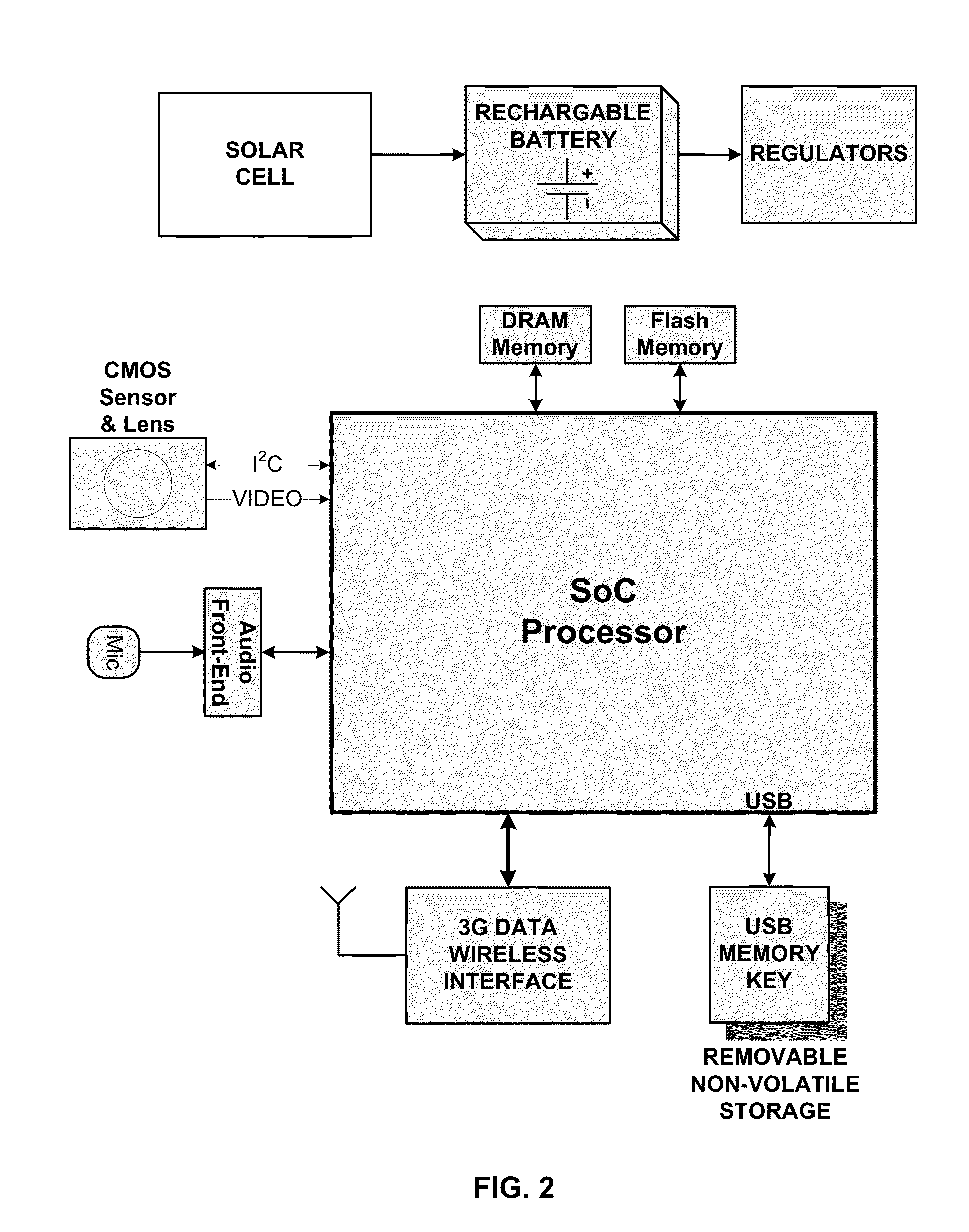Vehicle security with accident notification and embedded driver analytics
- Summary
- Abstract
- Description
- Claims
- Application Information
AI Technical Summary
Benefits of technology
Problems solved by technology
Method used
Image
Examples
first embodiment
[0197]present method, shown in FIG. 29, first checks if vehicle's engine is on. Engine on condition is checked using the switched power signal line and / or OMB-2 connection. If engine is on, then accelerator x, y and z components are filtered using a low-pass filter such as with a 5 tap FIR filter. The filtered accelerometer values are combined to calculate the acceleration vector (Accel_Vector). Similarly, gyro vector (Gyro_Vector) is calculated, but without any FIR filtering. An accident condition is determined if any of the following conditions is true:
[0198]A. Accelerometer vector is greater than a threshold value TLOW and width of peak accelerometer values is more than TP, and duration of accelerometer curve is more than a threshold value TDThreshold; or
[0199]B. A free fall condition is detected which means AX-LPF, AY-LPF and AZ-LPF all are approximately zero; or
[0200]C. A roll over condition is detected; or
[0201]D. Gyro vector value is more than a threshold value of Tgyro; or
[0...
second embodiment
[0204]accident detection is given in FIG. 30, where average acceleration value larger than a threshold is used as part of the equation instead of peak and width of acceleration curve. The acceleration curve is captured when a peak a detected and this sequence of acceleration values are then analyzed for various parameters such as width of peak, average value, the duration from t1 to t2, etc.
third embodiment
[0205]accident detection, shown in FIG. 31, first uses the vehicle make and model that is entered as part of set up of the present system during installation to determine the vehicle's unloaded weight. This weight value is then used to adjust various threshold values in the rest of the algorithm, because acceleration curves will be dependent on the vehicle weight. This embodiment also uses the Severity Index (SI) for accident detection. Also, free fall over a certain distance is used to filter out the present unit falling from windshield, because the distance will not be 3+ feet for example in that car for a passenger vehicle.
[0206]The fourth embodiment, shown in FIG. 32, uses both SI value more than a threshold value as well as width of peak of accelerometer curve larger than a threshold value. This embodiment also uses weight of vehicle to determine several threshold values. The fifth embodiment, shown in FIG. 33, is the same except vehicle weight is not used to determine threshol...
PUM
 Login to View More
Login to View More Abstract
Description
Claims
Application Information
 Login to View More
Login to View More - R&D
- Intellectual Property
- Life Sciences
- Materials
- Tech Scout
- Unparalleled Data Quality
- Higher Quality Content
- 60% Fewer Hallucinations
Browse by: Latest US Patents, China's latest patents, Technical Efficacy Thesaurus, Application Domain, Technology Topic, Popular Technical Reports.
© 2025 PatSnap. All rights reserved.Legal|Privacy policy|Modern Slavery Act Transparency Statement|Sitemap|About US| Contact US: help@patsnap.com



